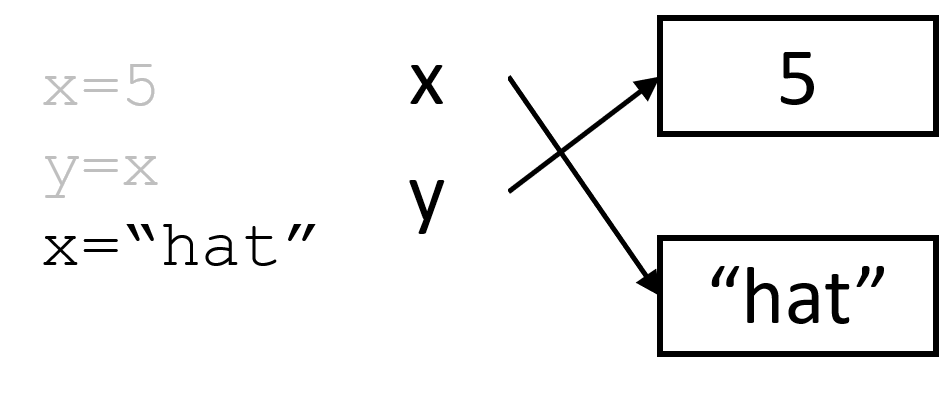Python Variables
Remember again that Python variables are simply labels, and are not bound to a specific type.

>>> x = 5
>>> print(x)
>>> print(type(x))
>>> y = complex(3, 5)
>>> print(y)
>>> print(type(y))
Like C++ pointers, you can have different variables pointing to the same object.

Use id() to get the address of the object in memory. If two variables have the same id, they both point to the same object.
>>> a = "I love to learn"
>>> print(a)
>>> print(type(a))
>>> b = a
>>> print(b)
>>> print(type(b))
>>> print(id(a))
>>> print(id(b))
>>> print(id("I love to learn"))
>>> a is b ## This is equivalent to id(a) == id(b)
You can also reassign an existing variable to point to a different object (of any type) at any stage of your program.

Try out the following, and make sure you understand what is happening.
>>> x = 10
>>> print(x)
>>> print(type(x))
>>> y = 7.11
>>> print(y)
>>> print(type(y))
>>> x = "I am no longer the number 10"
>>> print(x)
>>> print(type(x))
>>> x = y
>>> print(x)
>>> print(type(x))
>>> y = "Imperial College London"
>>> print(y)
>>> print(type(y))
>>> print(x)
>>> print(type(x))
Remember: a Python variable itself does not have a type. It is just a nickname. It is the object that it is pointing to that has a type.